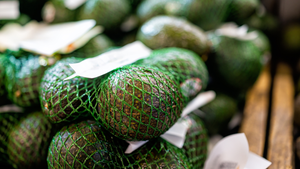Food Safety Standards on the Horizon for Insect FarmersFood Safety Standards on the Horizon for Insect Farmers
The Lempert Report: New legislation could clear the production of bugs fit for human consumption.
January 1, 2018
At the Mexico Food Tech Summit last fall, I presented a session on the use of insects in our food supply. Afterward, an insect farmer from Chile introduced himself and proceeded to show me scores of the insects he was raising for human consumption—both as whole insects and as ingredients in other foods. He also shared the biggest issue he faces: a lack of regulation and food safety standards for his “livestock” across the globe.
But it looks like that is about to change. A new set of European Union rules that aims to create standards around insects for human consumption came into force on Jan. 1. The goal is that common rules across the EU should enable insect farmers to scale up and change an industry that is thought of as "creepy-crawly" to finally be taken seriously and grow to its potential. In our 2017 and 2018 Trends Forecasts, we continue to underscore the need and opportunity for this resource to help lower the costs and environmental impact of protein on the planet.
The new regulation now explicitly covers whole insects, and ensures that the European Commission will handle insect-food applications directly, with the European Food Safety Authority advising.
Until now, it was unclear whether producers could market whole insects for human consumption, rather than just insect wings, for example.
Christophe Derrien, secretary general of the International Platform of Insects for Food & Feed (IPIFF), a lobbying organization, agreed the new rules will help. “This will definitely boost the sector,” he said, adding that Europe has a number of companies poised to expand production as a result of the changes.
The IPIFF argues that bugs can on average convert 2 kilograms of feed into 1 kilogram of body mass, whereas cows require 8 kilograms of feed to do the same thing. Insects also emit fewer greenhouses gases and ammonia than cattle or pigs, and are highly nutritious to boot, marking them as a suitable candidate for feeding a world population that's destined to reach 9 billion by 2050, according to the U.N.’s Food and Agriculture Organization.
Heidi de Bruin—CEO of Dutch insect producer Proti-Farm, which mostly reared insects for animal feed since the 1980s—told Politico that consumers are keen on bug food for health and environmental reasons. “It’s the nutritional benefits: low sugar, low salt and the sustainability factor,” she said. “Insects have natural vitamins and minerals; they are rich in calcium, high in iron, antibiotic-free [and] chemical-free.” She says we'll see a drastic move now."
About the Author
You May Also Like




